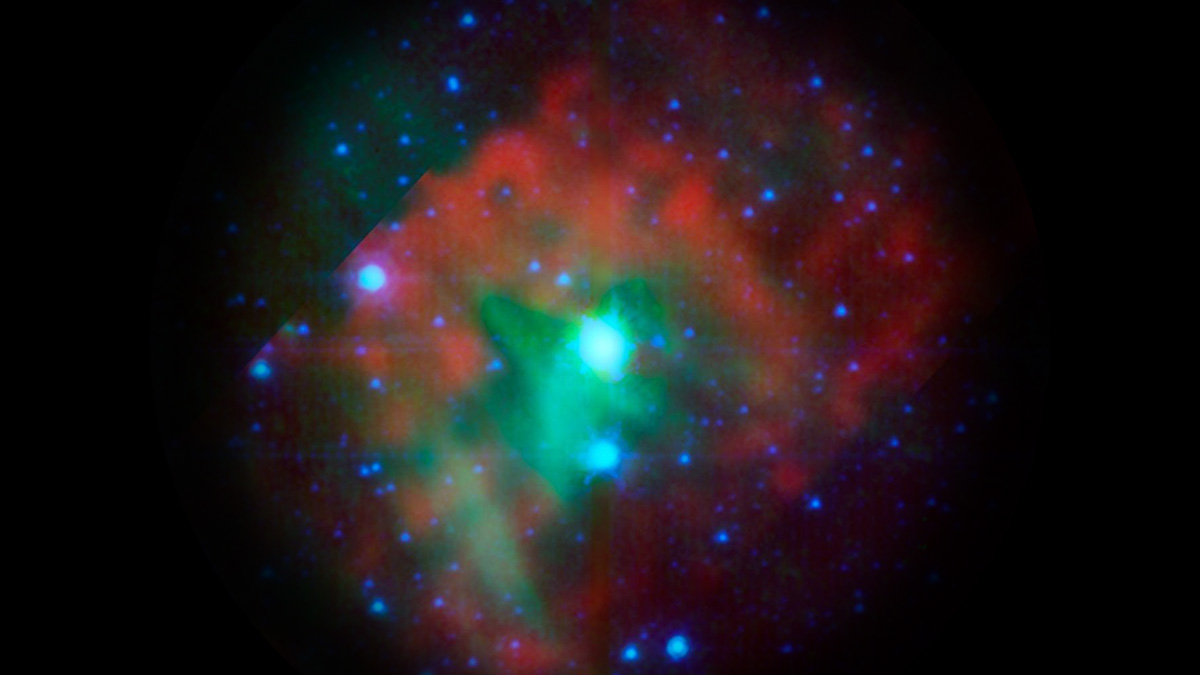Anyone with a modest interest in astronomy should be acquainted with Delta Cephei, a historically significant star in the constellation Cepheus best viewed in autumn.
Delta Cephei’s story ramps up in 1784 when a 19-year-old British astronomer John Goodricke noticed the star’s brightness changing (or pulsating). Until then, only a handful of stars in the sky were known to be variables like Delta Cephei. But it was astronomer Edward Piggot, Goodricke’s neighbor and mentor, who took a renewed interest in finding these particular stars. Young Goodricke joined him in the search, which led to finding other variables, including Delta Cephei.
Goodricke’s work with variable stars would have ushered in a promising astronomy career for him, but fate would not allow it. On an evening in 1786, while purportedly studying Delta Cephei, Goodricke became ill with pneumonia and never recovered. He tragically died at the age of 21.2 Little did Goodricke know that his discovery of Delta Cephei would change our understanding of the universe centuries later.
Fast forward to the Harvard College Observatory in 1908. Astronomer Henrietta Swan Leavitt discovered that Cepheids (stars that behave like Delta Cephei) allow us to measure great distances in the cosmos. This is so because we can measure their distance based on their pulsation (the time it takes to dim and brighten). What’s more, Cepheids are such luminous stars that we can see them in other galaxies.
Until this point, we didn’t know other galaxies like our Milky Way existed. Instead, we basically believed these smudges in the sky as distant nebulas. This viewpoint changed in 1923 after Edwin Hubble identified 12 Cepheids in the Andromeda Galaxy, then called the Andromeda Nebula. Hubble found that Andromeda was much farther away than ever believed, showing it to be a galaxy outside ours. As they say, the rest is history. This monumental discovery would forever change our understanding of the universe.
Note: I don’t provide a comprehensive history here about Leavitt and Hubble or details on how we measure distances to Cepheids; I recommend further reading starting with this page at aavso.org.
My Observations
| Date | September 19, 2022 |
| Time | 10:00 p.m. |
| Location | Seattle, WA |
| Magnification | 169x |
| Scope | Meade 8″ SCT |
| Eyepiece | 12mm |
| Seeing | Good |
| Transparency | Good |

Tonight I’m observing one of the most famous stars in the sky, often referred to as a gem belonging to King Cepheus. Every backyard astronomer should see Delta Cephei at least once in a lifetime. Also, this area in Cepheus is a remarkable starfield. Coincidentally, on this solemn day, the world said goodbye to England’s longest-reigning monarch, Queen Elizabeth II. I wish her soul well with the hope she’s seeing the majesty of the universe from the heavens.
| Date | September 26, 2022 |
| Time | 9:45 p.m. |
| Location | Seattle, WA |
| Magnification | 169x |
| Scope | Meade 8″ SCT |
| Eyepiece | 12mm |
| Seeing | Above Average |
| Transparency | Above Average |

Key Stats
| Constellation | Cepheus |
| Best Viewing | Autumn |
| Visual Magnitude | Var: +3.6 to +4.3 |
| Absolute Visual Magnitude | -3.05 |
| Separation | 21.5″ | 5700 AU |
| Position Angle | 191° |
| Distance from Earth | 870 ly |
| Orbital Period | 5.4 days |
| Milky Way Location | Orion Spur |
| My Viewing Grade | A |
| Designations | SAO 34508, Alrediph, δ Cep, δ Cephei, Delta Cep, 27 Cep, Struve STFA 58, HD 213307 |
Sources and Notes
Banner: Dunbar, Brian. “Standard Candle in the Wind.” NASA, NASA, https://www.nasa.gov/mission_pages/spitzer/multimedia/pia13781.html.
1 Harrington, Phil. “A Pair of Royal Subjects.” Astronomy.com, 8 Nov. 2019, https://astronomy.com/magazine/phil-harrington/2019/11/a-pair-of-royal-subjects.
2 “Delta Cephei.” Aavso, https://www.aavso.org/vsots_delcep.
Sketch by Wayne McGraw
